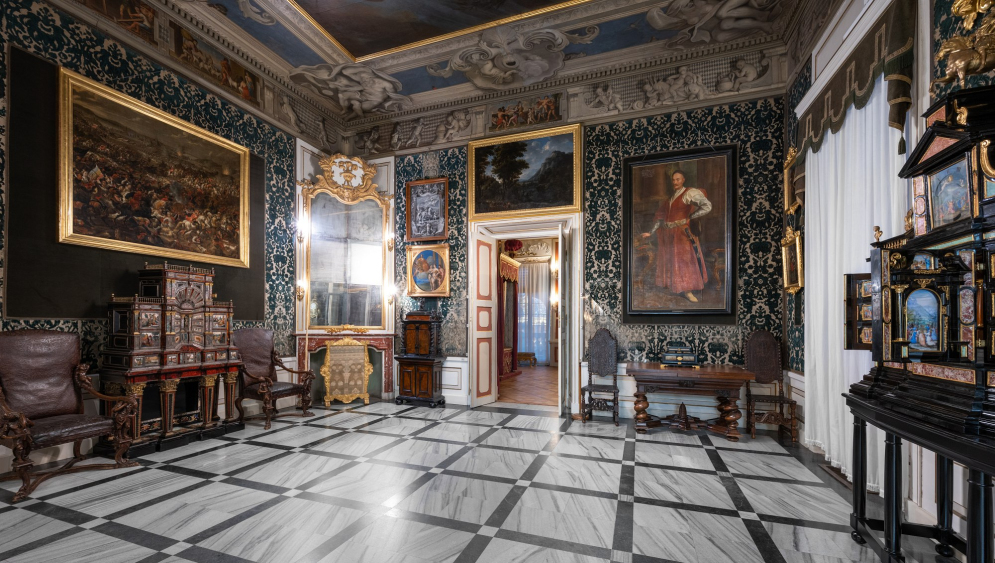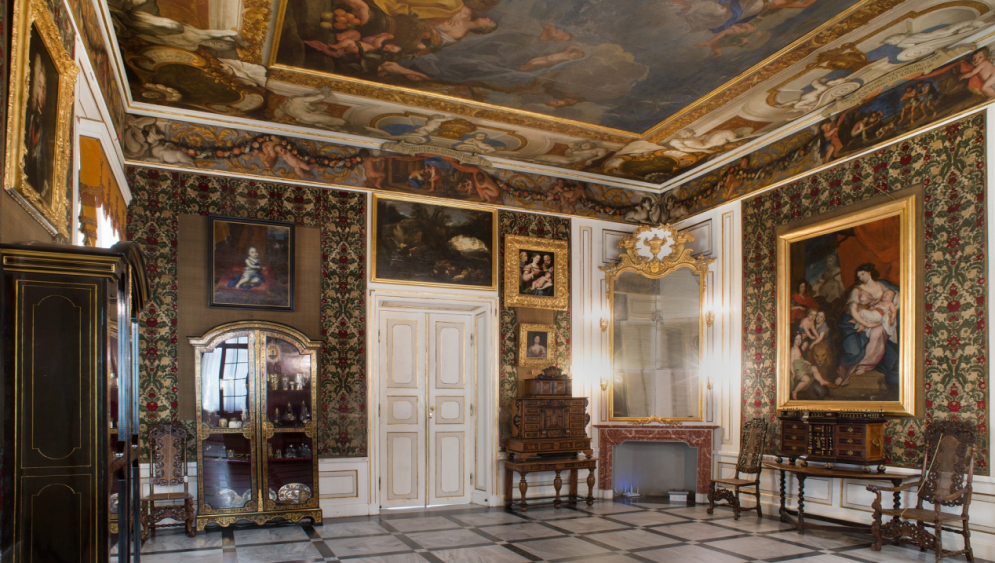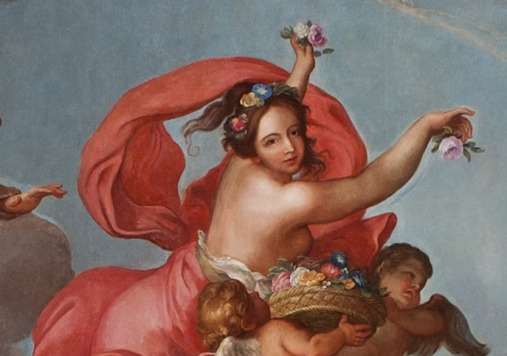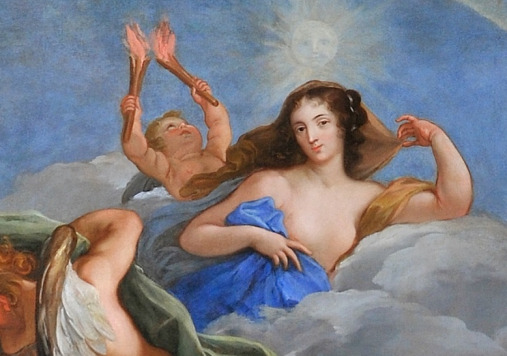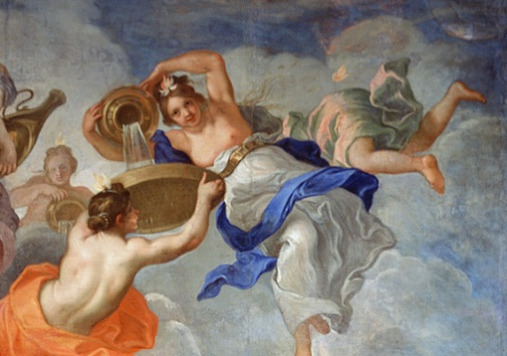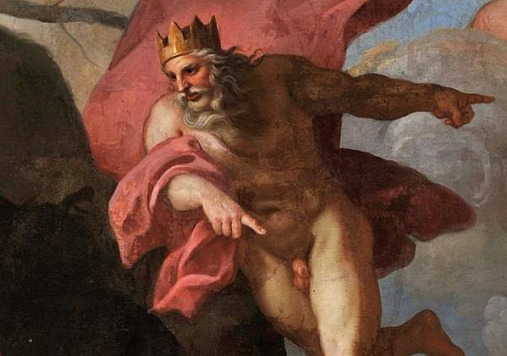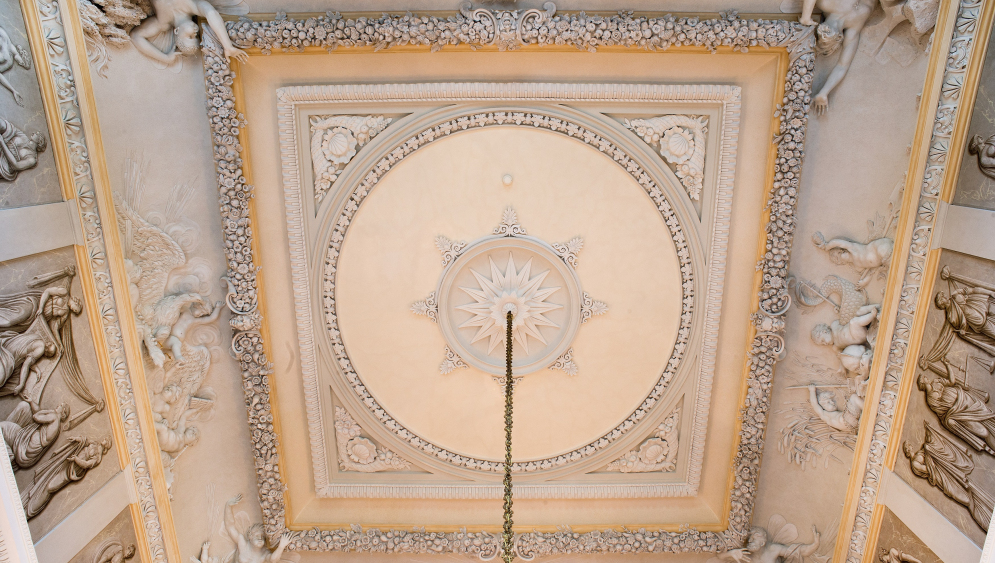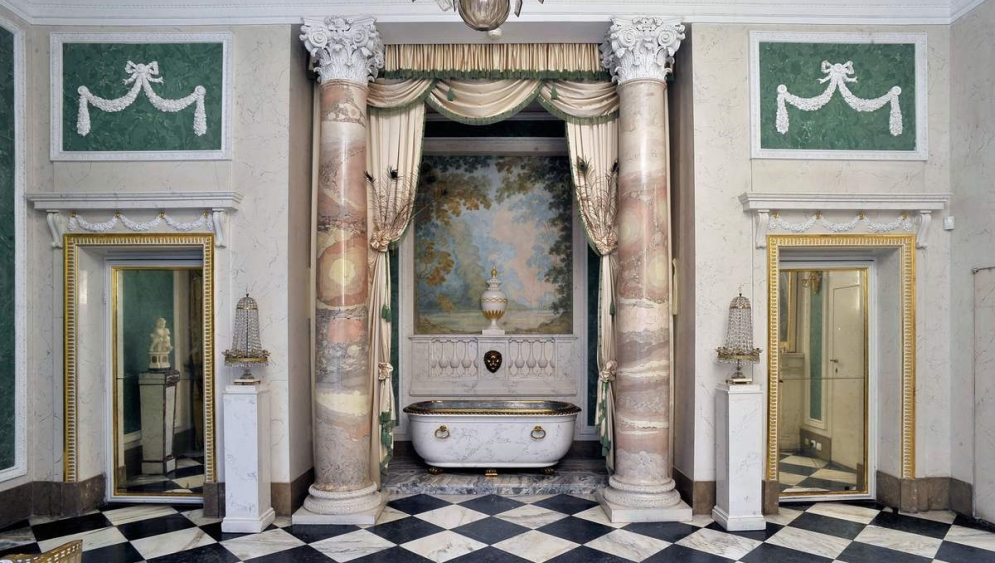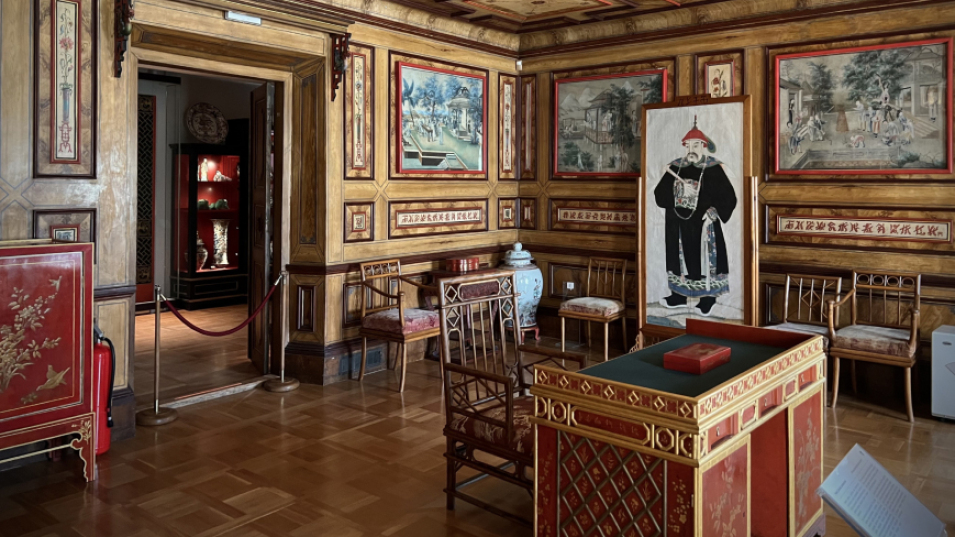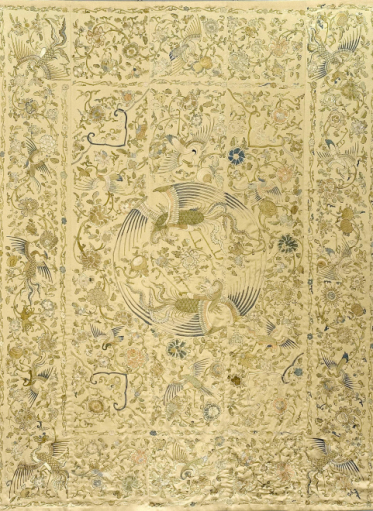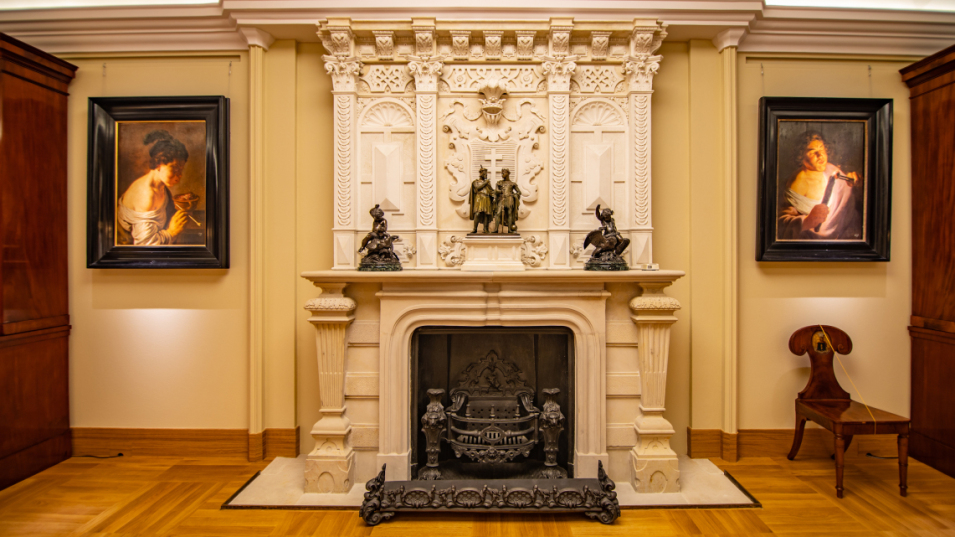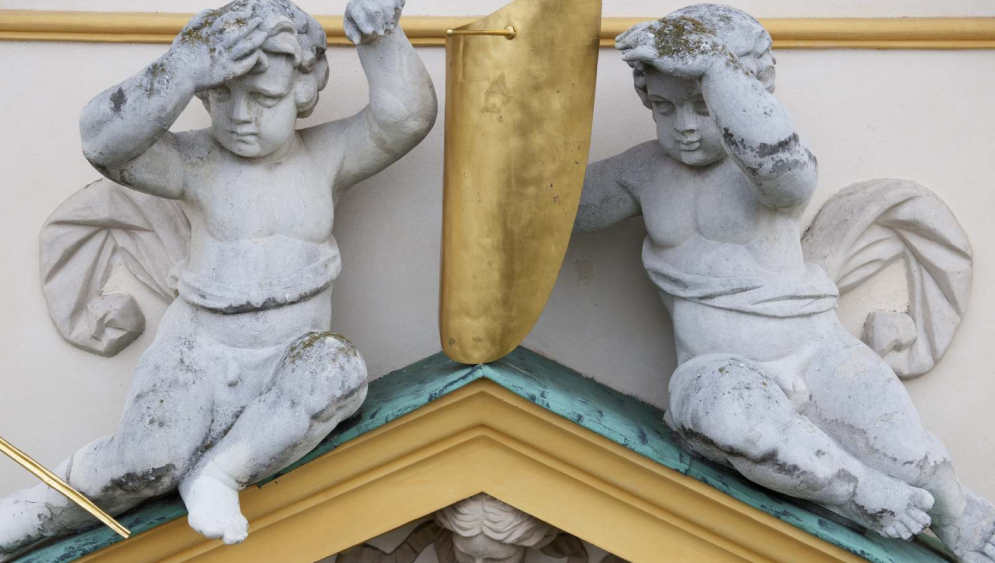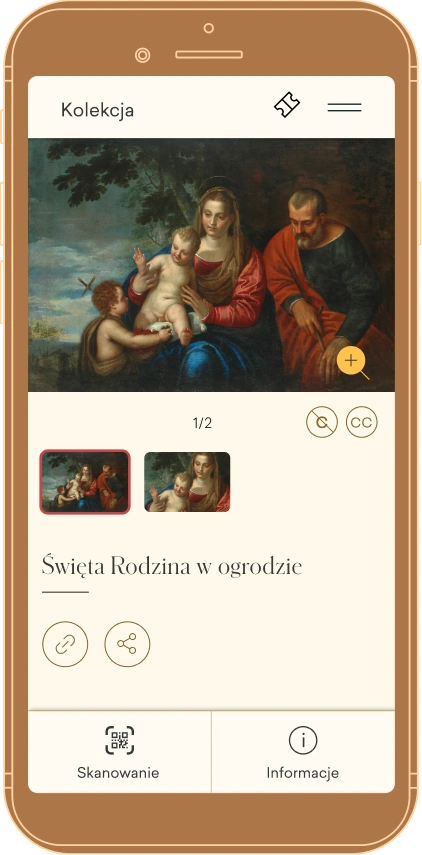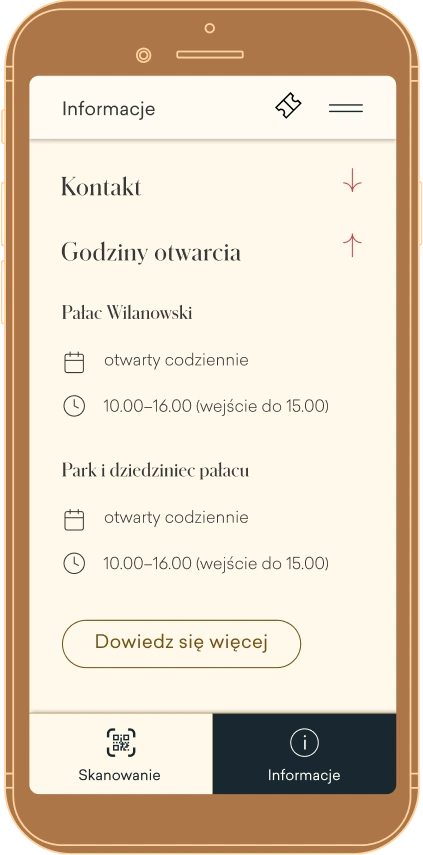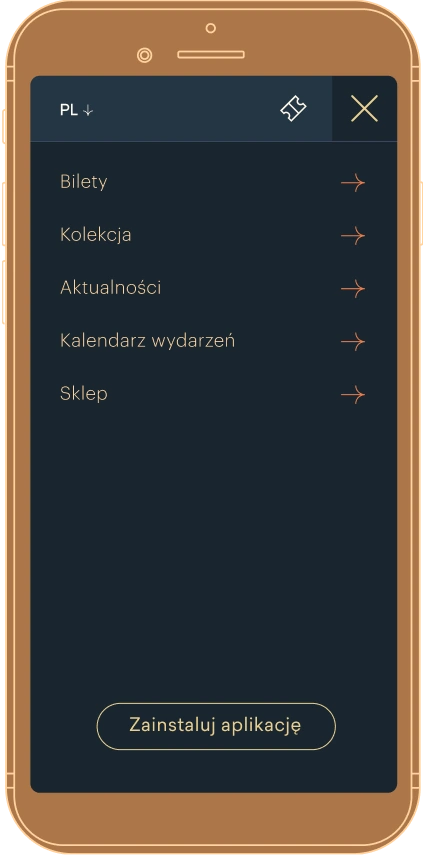The Royal Apartments
This is the oldest, core part of the Palace. Its decorations and decor date from the times of the first owners, Jan III and Maria Kazimiera. The southern part belonged to the King and the northern part to the Queen. The apartments include, among other things, the Antechambers, the Bedrooms, the Grand Vestibule, the Dutch Cabinet, and the King's Library. The interiors are decorated with plafonds, stucco decorations, exquisite paintings and magnificent wall fabrics, as well as precious furniture and numerous examples of historic artistic craftsmanship.
The King's Antechamber and the King's Bedroom
The Queen's Antechamber and the Queen's Bedroom
The Four Seasons
The ceilings of these rooms are decorated with plafonds depicting the four seasons. In the King's Antechamber, there is an allegory of winter, symbolising the hardships of government, and in his Bedroom an allegory of summer, symbolising the prosperity of the country during the reign of Jan III. The Queen's Antechamber is decorated with a plafond representing Autumn (an allusion to the love of Jan III and Maria Kazimiera), while her Bedroom is adorned with Spring (a symbol of the flowering of the Polish-Lithuanian Commonwealth under the patronage of the Queen). These preserved plafonds are some of the most valuable monuments of Baroque art in Poland; they were made by the court painter, Jerzy Eleuter Szymonowicz-Siemiginowski.
The Potockis' Museum
The rooms in the north wing of the palace have preserved the character of the 19th century museum, opened in 1805 by Stanisław Kostka Potocki and Aleksandra Potocka. The inscription Cunctis patet ingressus (Free admission for all) on the floor of the Cabinet before the Gallery expresses their belief that the collection should serve society. For more than two hundred years, an impressive collection of works of art collected by representatives of the Potocki family has been presented here.
The Princess Marshal Lubomirska's Apartments
The apartments belonged to Izabela Lubomirska née Czartoryska. They are located in the south wing and in the so-called Bathing Pavilion, added to the Palace in the last quarter of the 18th century. The furnishings and interior decorations reflect the artistic passions, collecting passions, and refined taste of the Princess Marshal Lubomirska. In particular, the Bathroom says a lot about the customs of the era, and the personality and preferences of its owner.
